
Dawson has been collecting and reusing everything ever since he was a baby but he must rescue the world from his robotic creation, the Vacu-Maniac! Recycling is gently imbedded in Dawson’s outrageous adventure detailed in intricate (and labeled) illustrations.
Awesome Dawson
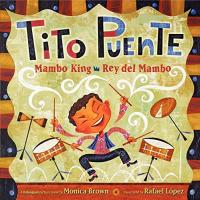
Tito Puente was born to be a musician. He grew up to become the Mamba King to whose music people danced the mambo, rumba, and cha-cha. Rhythmic language — in English and Spanish — and animated illustrations briefly present Tito’s life and the impact of music throughout.
Tito Puente, Mambo King / Tito Puente, Rey del Mambo

Soft illustrations and brief, patterned language suggest a special pleasure from January to December, just right for sharing. After all, each month of the year is a “time for fun with new friends!”
A Year with Friends

The seasons of a year are presented in realistic illustrations and thoughtful, evocative haikus. A brief note about the form is followed by a final poem: “Earth circles the sun/spinning a tapestry of/days, months, seasons — life.”
The Year Comes Round: Haiku through the Seasons

Unique observances for everything from rats to limericks are celebrated in a variety of poems and poetic forms. When combined with comic illustrations, the lighthearted collection is sure to keep readers chuckling from cover to cover.
World Rat Day: Poems About Real Holidays You’ve Never Heard Of

Textured borders contain each double-page illustration which places the familiar cumulative song on an African savannah. Rebuses are included in the body of the book and again in a key; music is also included to make this version ideal for sharing.
There Was a Tree
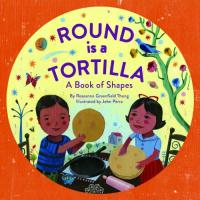
Circles, squares, triangles, ovals and stars are all around! The rhyming text incorporates Spanish words which are defined in illustrations reminiscent of folk art. A glossary of Spanish words concludes this engaging glimpse into Mexican culture.
Round Is a Tortilla: A Book of Shapes

Stripes are found in nature in a variety of flora and fauna in many habitats. From exotic to domestic, revel in observing stripes in carefully crafted illustrations and lyrical text. Additional information and a playful call to match animal with stripe ends this handsome volume.
Stripes of All Types

Rain spoils Max and Ruby (and friends) outdoor plans but their clever grandmother’s treasure hunt more than makes up for it. Clues in the form of traditional rhymes are numbered, hidden beneath small but sturdy flaps as well as in the spot art are sure to make this a modern classic.
Max and Ruby’s Treasure Hunt

Animated illustrations and a variety of poems from around the world celebrate well and lesser known occasions. From Arbor Day to Diwali, from Pancake Day to Purim — and lots in between — readers are introduced to a range of poets and poetic forms in this appealing book.
Let’s Celebrate: Festival Poems from Around the World

A warm portrait of universal parental love begins on a beach when a boy asks his mother, “How far do you love me?” Lyrical responses combine with stunning double page illustrations in places around the globe until the boy is tucked into bed with his response: “I love you to the moon!” A world map and the query in each language conclude this tender book.
How Far Do You Love Me?

Homographs make sense in context. A word wall of words that are spelled alike but are pronounced differently (depending on the context in which they are used) may be developed inspired by this funny animal-filled “zoo.”
Zoola Palooza: A Book of Homographs

This ‘Let’s-Read-and-Find-Out Science’ follows garbage from the trash bin to various places (landfills, recycling centers, etc.). Common terms are explained and made accessible to children. This title would pair well with Kate & Jim McMullan’s I Stink! (HarperCollins), a book told from the truck’s perspective.
Where Does the Garbage Go?
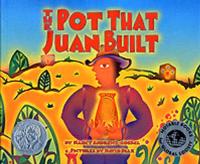
A cumulative poem (in the cadence of “The House that Jack Built”) chronicles the work and life of Mexican potter, Juan Quezada. Words could center around the culture, the potting process, or art & artists.
The Pot that Juan Built
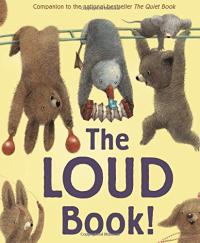
There are many kinds of sounds. Use this book as a jumping off point for loud sounds, onomatopoeic sounds, or use The Quiet Book (Houghton) for the opposite of loud. These books might also inspire a word wall for emotions (e.g., how does this kind of quiet/loud make you feel?).
The Loud Book
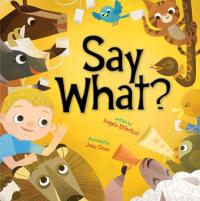
Are animals and their familiar animal sounds really trying to say another word in English? (For example, “When a hoses says NEIGH,/does she really mean HAY?”) Word walls could be made of rhyming words (or word families) or of animal sounds in English as well as what animals say in other languages.
Say What?
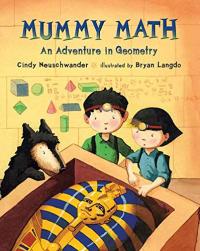
Basic geometry is introduced in this story about children who accompany their parents on a trip to Egypt. A word wall of geometric shapes and terms would enhance a math study.
Mummy Math: An Adventure in Geometry

Terms and comparisons to describe numbers are presented in an engaging story from which word wall content could be developed and expanded.
How Much, How Many, How Far, How Heavy, How Long, How Tall Is 1000?
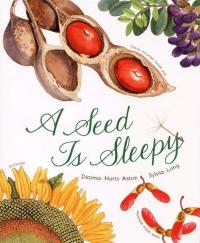
How many kinds of seeds to you see? Where are they found? This handsomely illustrated book of seeds provides a poetic look at the myriad types of seeds and plants to complement a classroom study.
A Seed Is Sleepy
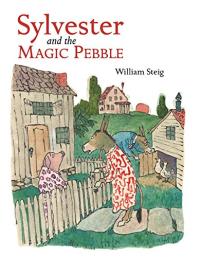
When a young donkey named Sylvester comes across a magic pebble, he saves himself from a confrontation with a lion by wishing himself into a rock. Frantic parents search for Sylvester until they stop for a picnic on a large rock. Rich language and humorous cartoon illustrations make this a memorable classic.
Sylvester and the Magic Pebble

One animal’s claim is followed by others who are successively bigger, smaller, etc., each using rich (and richer) descriptors.
Big, Bigger, Biggest
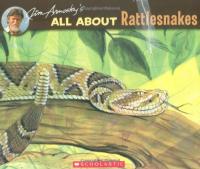
All About Rattlesnakes

In this springtime tale, a young girl and her father plant a flower box together.
Flower Garden

